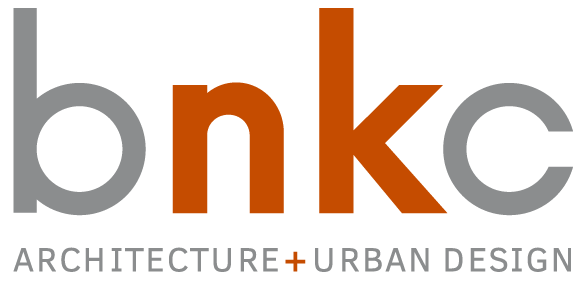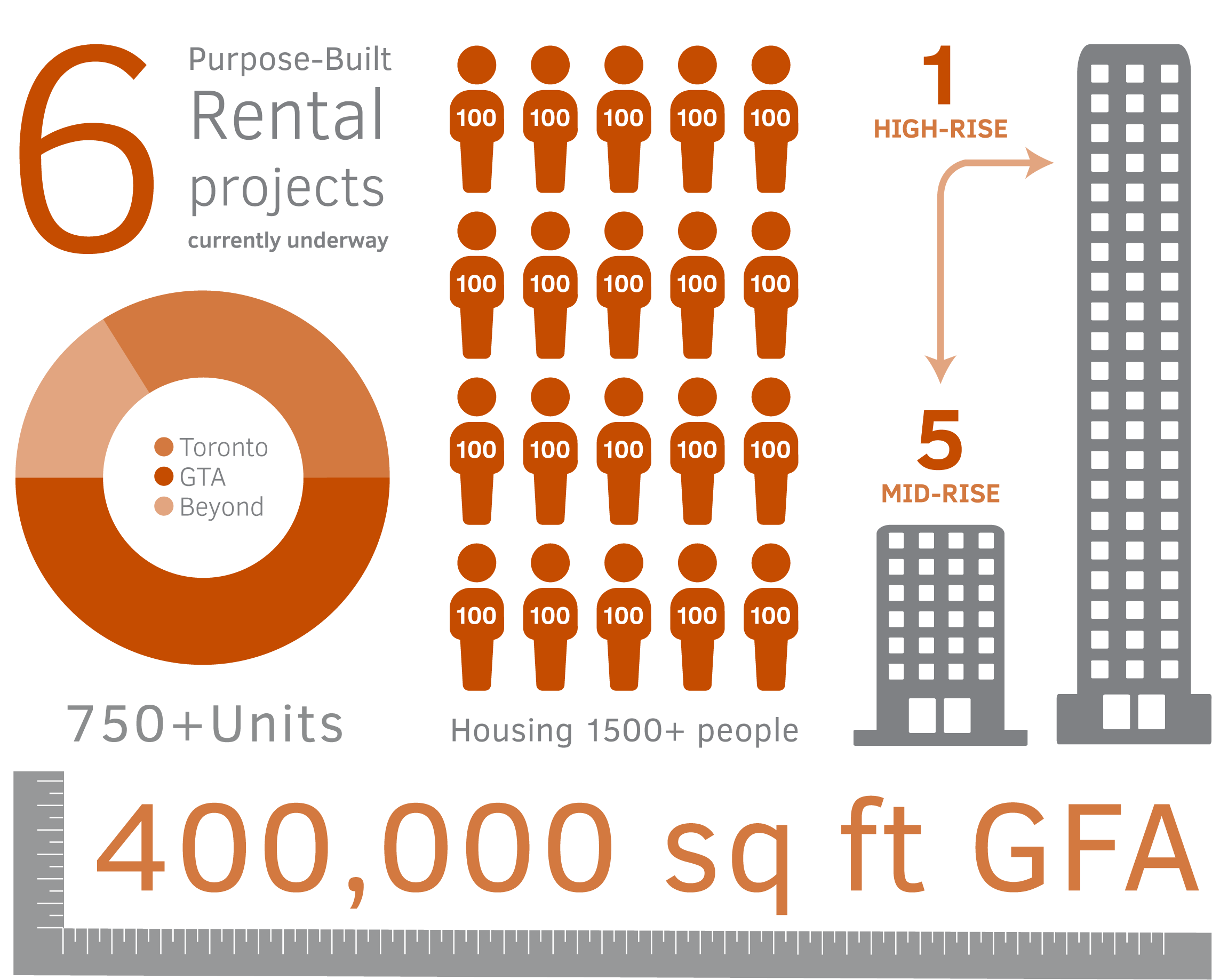Toronto is going through a significant transition in its thinking towards housing. Till now, the City has largely focused on one of only two typologies when it comes to the development of its housing stock: condos and low-rise developments – both focused on ownership.
As housing prices slip further from reach, it’s clear this approach fails to meet the needs of Toronto’s population. Not everyone who needs to be housed can afford a house (or condo). Vacancy rates are at an all-time low, and rents continue to climb. As such, the desire for rental accommodation, not reliant on the ‘shadow’ rental market provided by condo development, is rapidly increasing.
At BNKC, we have over a half-dozen purpose-built rental projects in the works; including 15 Chisholm Ave, 2720 Danforth Ave, and 5509 Dundas which are all well underway; while other exciting projects are in the early stages of development. As we continue to forge ahead in this growing sector, we’ve collected some key insights we’d like to share.
At the most basic level, the difference between condo and purpose-built rental development comes down to a short-game vs. long-game approach. Developers only need to sell a condo once, whereas a rental must be “sold” over and over again.
Condo developers are looking to minimize upfront cost to maximize their investment – put the greatest number of units on the smallest piece of land, build it efficiently and inexpensively, and sell as quickly as possible – while rental developers are in it for the long haul. They’re not looking to unload their building as soon as it’s built. Instead, they’re looking to maximize their investment over the long run for themselves or their investors. It’s true that rental projects are more capital intensive for developers. However, purpose-built rentals are also seen as more durable long-term assets for income generation.
So, what does that mean for us as designers? We’ve broken it down into a top-five overview of how designing purpose-built rental differs from condo development.
- Enduring – We’re used to seeing the glitzy campaigns, marketing the latest condo development to their ideal demographic (Yonge & Rich anyone?). Purpose-built rentals require a different overall strategy – one that envisions a building’s appeal way into the future. This is accomplished by considering how the community will evolve over time, and incorporating unit sizes, amenities, and accessibility that will fit for current and future tenants. Finishes also matter. Purpose-built developments care less about what’s trendy now, and more about timeless materials that will appeal for years to come (mass timber for instance, has enduring appeal and provides the flexibility to adapt in the future).
- Durability – Is new always better? We don’t believe so. The materials and finishes that adorn condo projects often look spectacular at completion, but do they weather well? Since the building isn’t a developer’s concern once it’s been sold to an owner, choosing materials that last is not always a priority. In purpose-built rental, since they’ll need to pass the test of time, systems and materials throughout the building must be selected to reduce operational costs, and appeal to prospective tenants. This means an increased upfront cost, but higher-end products make more sense over time – think solid surface vs. laminate.
- Life-Cycle Costs – Consider the upfront cost of an energy modeling exercise in the early design stages. While a condominium may be designed to be marketable, it doesn’t necessarily care about the long-term life-cycle cost to the condominium owner, and this step is often overlooked. A resulting façade can look sharp but may not be the most energy efficient or durable. For apartment owners, the long-term energy costs are a crucial component of their financial forecasting. Incorporating energy modeling into the early stages of the process, as a design tool, will make for potentially large energy and cost-savings down the road. It can also make for a more interesting approach to a building’s massing, envelope, and orientation.
- Flexibility – Let’s think about the impact of building services on the design of residential units. How MEP is incorporated within a unit will determine how easy it will be to make future modifications to the space. In the condo ownership model, there’s rarely a case where adjoining units are amalgamated into one. Similarly, condos aren’t usually subdivided into smaller units. In purpose-built rental, when the developer maintains ownership of all the units within the building, they have the luxury of flexibility. They can renovate and re-allocate their units to meet demand. To help with that flexibility, the accessibility of the MEP needs to be considered in the earliest design stages.
- Future Proofing – Does your building have space for drone delivery? It may seem far-fetched, but there is a lot to consider when developing an investment you plan to hold onto for the foreseeable future. Things like technology, autonomous vehicles, Amazon deliveries, and even alternative future uses (conversion to offices, for example) will need to be addressed in the design, even if not implemented right away. Designing purpose-built rentals is an interesting and exciting exercise. We’re not just creating a building to meet the needs of today, we’re imagining communities 10-, 25-, and 50-years into the future!
You can see, purpose-built rental differs greatly from condo development, and there’s a lot to consider in the earliest design stages in order to make an apartment building a valuable long-term asset. At BNKC we believe that rental options are good for developers, investors, and communities. We’d like to see more of them going up in Toronto and beyond.
So, we’ll part with one closing thought about how we might see more of this type of development. The smart business model of purpose-built rentals has encouraged the development of sites not previously considered. Property owners with existing commercially leased spaces with room for increased density are seeing apartment buildings as a complimentary use of their properties. Infill development of the properties has the potential to drive additional revenue for these owners, but the resulting buildings also create diversification and enhancement for a larger community, further unlocking other potential developments and access to lands.
If you’re interested in learning more, give us a call – we love talking about purpose-built rental buildings!

